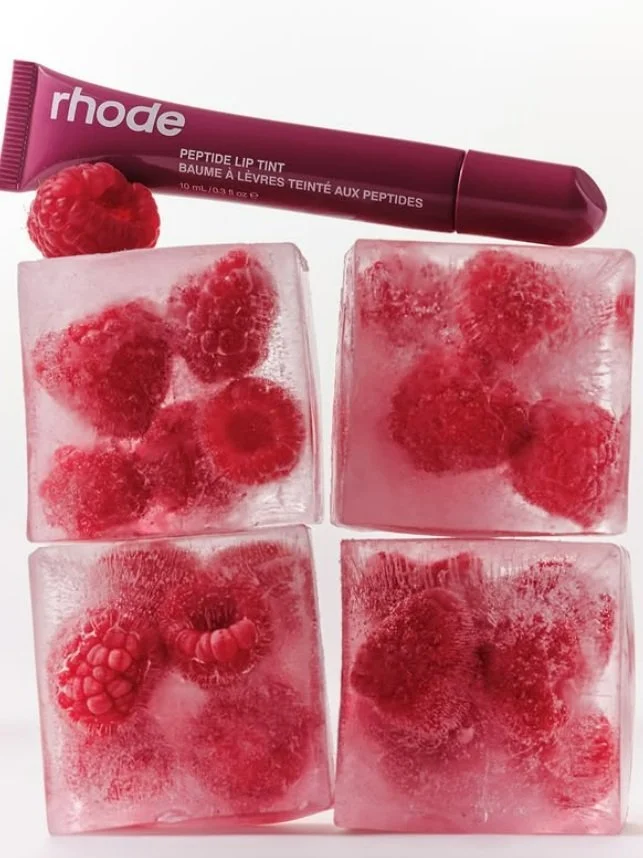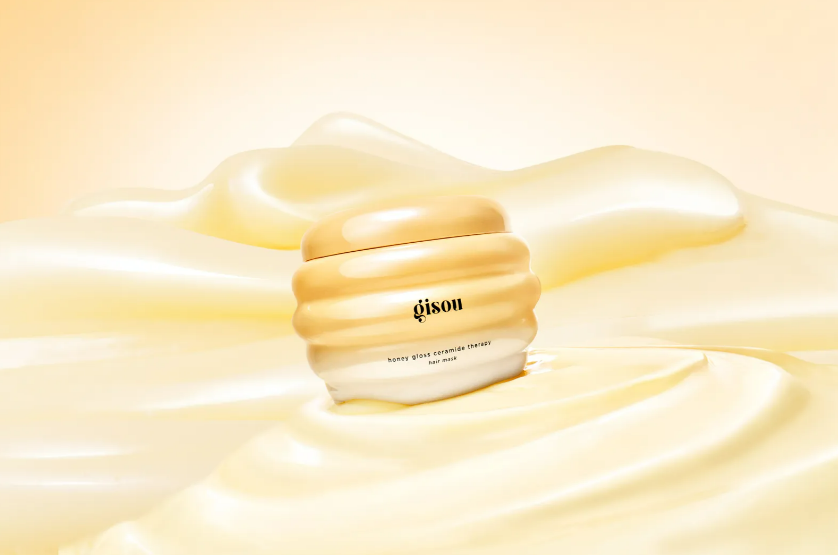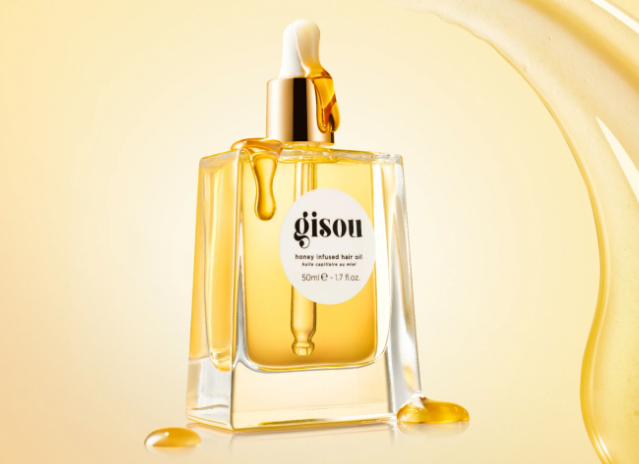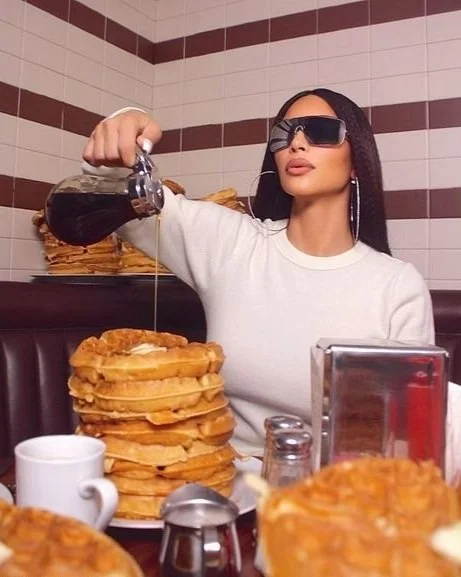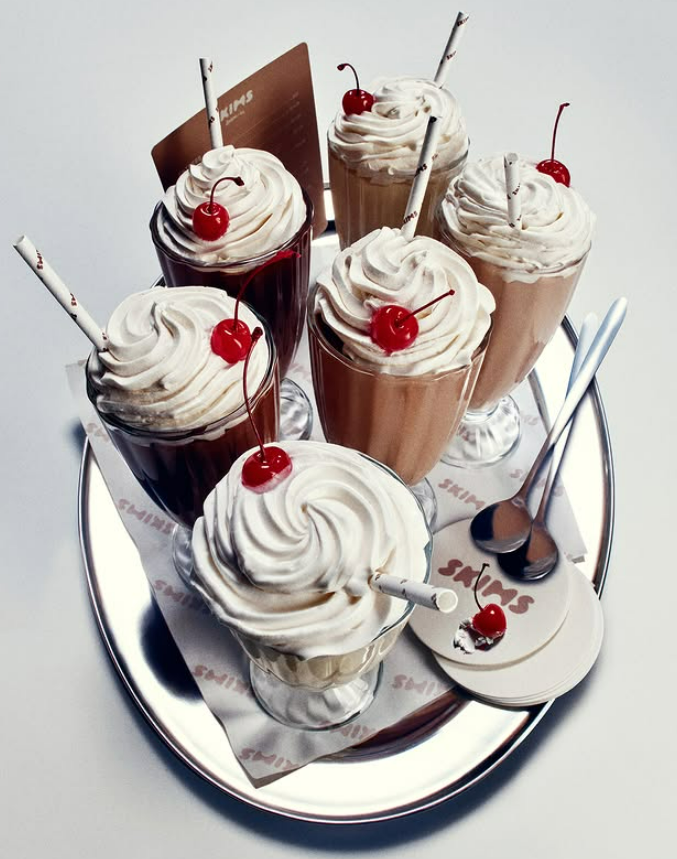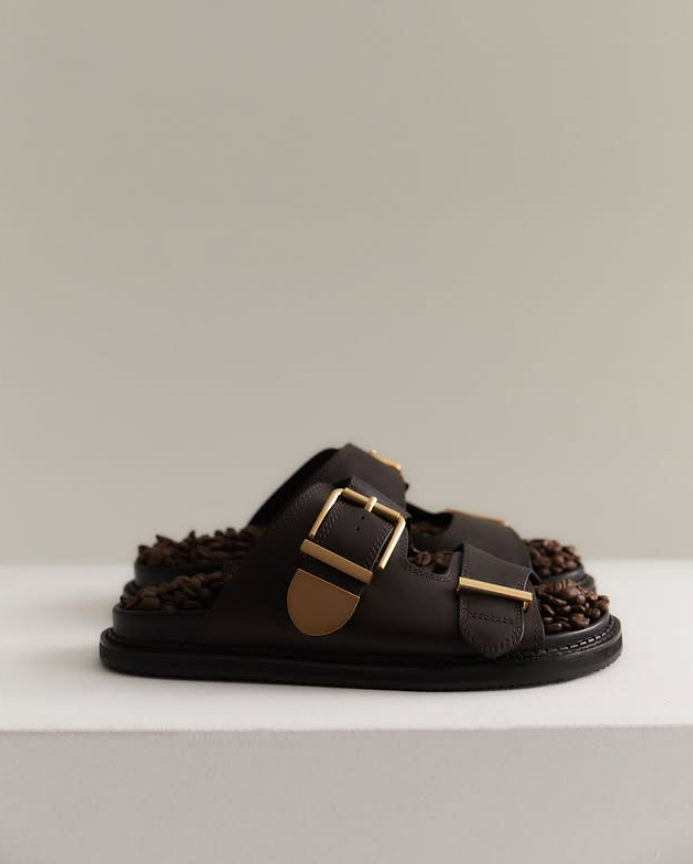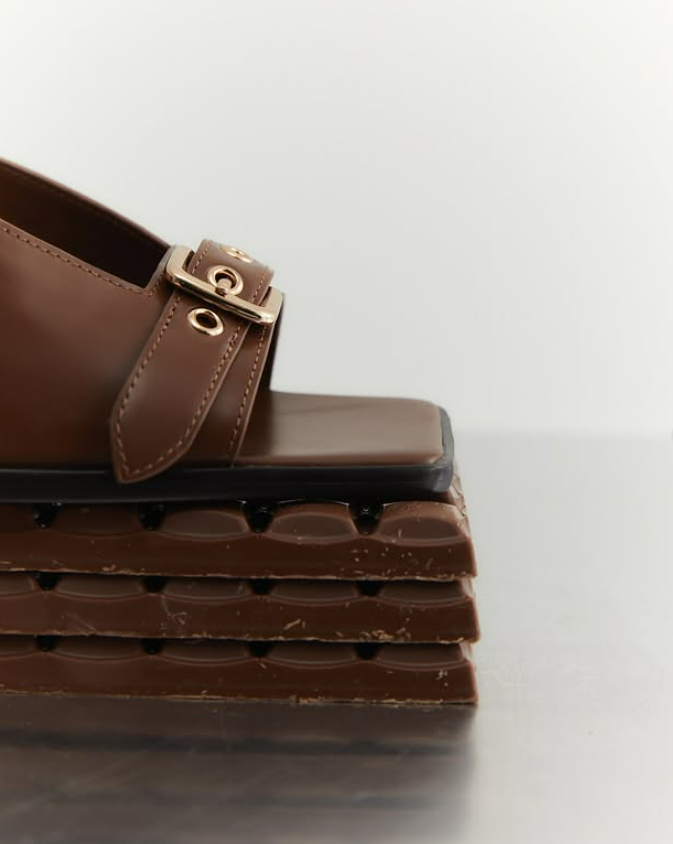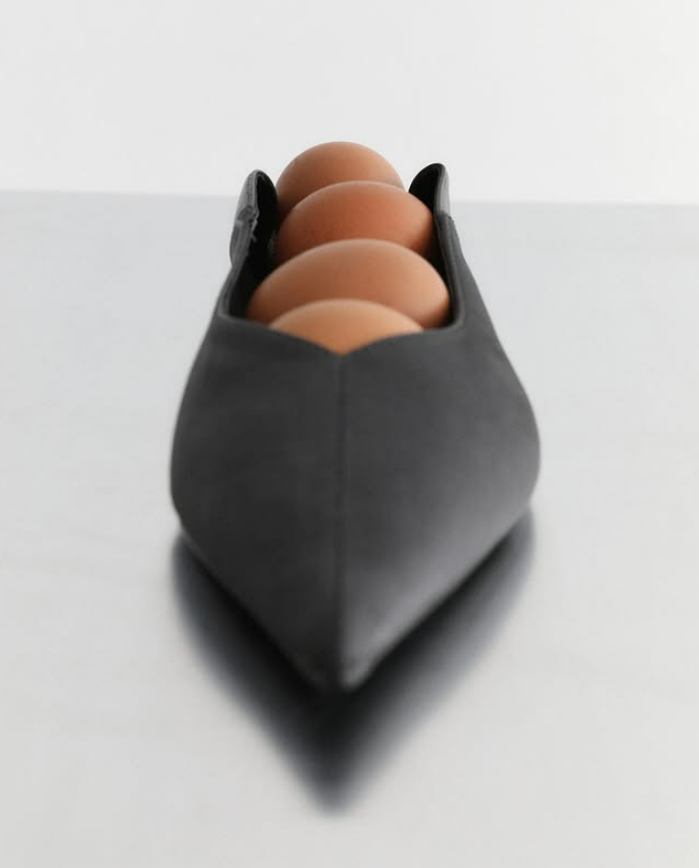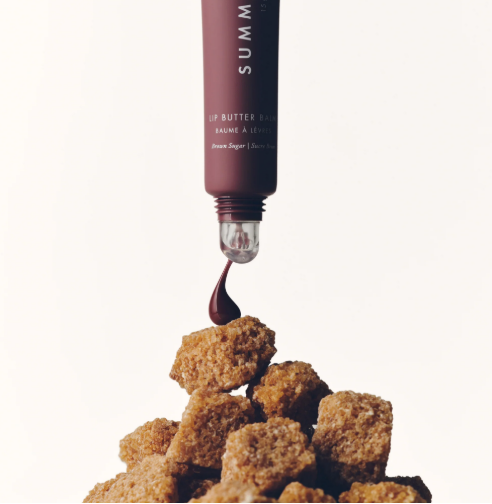Why food is infiltrating your feed
The secrets of sensory marketing
Butter, brown sugar, chocolate, berries, milk, cinnamon glaze, syrup, whipped cream and a cherry on top.
No, this isn’t a recipe for the ultimate dessert or a Yo-Chi lineup… but it could very well be the reason you just hit add to cart.
If you’ve scrolled your phone for online shopping lately, chances are you may have had a taste of this sneaky little technique beauty and designer brands are serving up daily… one that’s got you drooling for their product.
With the rise of ecommerce, brands have gained convenience but lost tangibility. Customers can’t touch, try or test before they buy. This is where sensory marketing steps in.
Ingraining food in the description of a product creates an experience where aesthetic, appetite, and attraction melt together - a rich tactic that has always existed, but is seeing a newfound hunger in the market, making for some pretty sweet new trends.
We Are Brooklyn dishes up everything you need to know about this delicious technique - from what it is, why it works, who’s doing it best, and how you can sink your teeth into including it in your own marketing mix.
What (is it)
Ever noticed how people often describe hair not as a colour anymore, but instead as a tone? You could go into the salon and request honey blonde, toasted almond, warm chestnut, cherry red, chocolate brown – the hues (and their delicious descriptors) are endless.
Then, come the ads. Beauty products propped up against a warm cinnamon scroll, coated in pink cotton candy, or nestled into a fresh scoop of whipped cream – makes you drool just thinking about it.
By pairing a product with its edible counterpart in a visually indulgent way, shoppers can connect to the product and brand on a deeper level. Food triggers emotion, drives desire, and enhances understanding, whether that be: taste, texture, or colour.
The creative opportunities to use food as a sales driver doesn’t stop at beauty or fragrances - they extend into clothing, shoes, accessories and beyond. Think hyper-literal: a buttery soft clothing line with marketing driven by the ingredient, a berrylicious lip tint surrounded by the colours of a perfectly styled fruit bowl. Or, you could go for the more thought-provoking association, such as a bag being a brands ‘bread and butter’, or shoes so soft and supportive they could carry eggs. It’s all in how the brand portrays it.
Why (it works)
The psychology is so simple, almost making campaigns of this nature a stroke of everyday genius, and you, mad you didn’t think of it first. It’s the perfect storm of colour psychology, sensory association, nostalgia, and nuance. Here’s why it’s so irresistible.
1. It explains the product.
Colour, taste, texture, ingredients – food is a universal language we all speak, and describes a product in an easily interpretable manner audiences understand and instantly connect with in their brain. You may not know the shade of the lipstick, but if a picture of berries is used to describe it, we fill in that missing vital detail. This is particularly effective in an ecommerce world, where experiencing the product in person is not always a possibility.
2. It evokes emotion.
Butter = smooth. Cinnamon sugar =sweet. Cherry red = bold. We subconsciously assign a thought and feeling to a food, and that extends into its inedible associations. The primary objective of sensory marketing is to invoke a feeling and a fundamental emotion – this stimulating reaction is what causes action.
3. It builds trust.
Food is real, relatable, and natural. By aligning a brand product or image with food, you are inferring a sense of realism, and generating trust through its organic portrayal. Its relatability makes a product feel trusted and familiar from the outset.
4. It taps into experience.
For better or for worse, we all have memories associated with food. It could be that perfect birthday cake, or a delicious meal enjoyed abroad. We make most of our memories over a meal, and there is even some subconscious connection that food = life, fuel, sustenance. In turn, food imagery brings life to a product, linking a campaign to a core memory and invoking the power of nostalgia.
5. It drives desire and feeds a hungry market.
McDonald’s and KFC use red for a reason in their branding – it drives hunger. Sensory marketing turns products into food porn, driving hunger and turning it into consumer action. You are made to feel as if you need this product in your daily routine, that it will bring the satisfaction craved.
Who (is doing it)
The best of the best that are leading the rest – these are the trend-tapping brands that are putting food at the forefront, and making their products irresistible to the tempted browser.
Rhode
Credit: Rhode & Byrdie
The obvious example first, always. Rhode isn’t doing anything that hasn’t been done before – they are just doing it better than most. For each product, Hailey Bieber and her marketing team have deciphered the exact dessert correlation that will entice onlookers. From Toast Peptide Lip Tint and Body Milk to Raspberry Jelly Lip Tint, Hailey has perfected the TOV, coining the term “glazed donut skin”, which is a way of describing the texture your face should be to achieve the ideal skin. When it comes to invoking emotion, Rhode takes the cake on baking an effective sensory experience for women. If the flavour is favourable, your mind won’t be able to discern the two.
Gisou
Credit: Gisou
In the beauty product realm, leading hair care brand Gisou is a stand-out. One word drives the entirety of their brand - honey. Gisou’s range features the benefits of honey – from its properties to its texture and smell. Using glowy honeycombs and smooth honey blonde backdrops in their advertorials, they are constantly linking product to the ingredient, subconsciously driving a viewer to perceive their product differently. You see the honey hair oil, and immediately know it will leave your hair soft and sweet as honey. You also make the connection of the product being “natural” and almost acting like a “superfood” for your hair. If there’s anything we know, it’s that Gisou has built a cult following brand that’s thrived for 10 years for a reason.
Skims
Credit: Skims & Mel’s Drive In & LA Times & Weho Times & Glamour & Guide
Known for their silky soft range of undergarments and shapewear, the modern brand Skims instantly entered the food market. Walking in line with Rhode, Kim Kardashian lead marketing campaigns that saw the clothesline marked in pancakes, waffles, and every sweet treat in between. The primary effect is three-fold – inferring the line is too good to resist, is buttery soft, and that if you wear Skims, you’ll look like a snack, too. The campaign was underpinned by the theme “comfort food”, suggesting the comfort factor and staple place the brand has in the daily life of women.
Alias Mae
Credit: Alias Mae
Shoes… leather, synthetics, foams come to mind, yes. Chocolate, eggs and coffee beans? Not so much. But when you look more deeply into the campaign run by leading women’s shoe label Alias Mae, you uncover a treasure trove of meaningful symbology. They don’t just want to show their leather range. They want you to get a taste of the texture, the colour palette and the aesthetic, by shoving sticks of butter in their shoes to portray the softness of the product – and distinguish themselves in the process. Some are more self-explanatory than others – coffee beans describe a distinct espresso colourway of the Panama Sandal, chocolate bars help the Naomi Tan Heel appeal to the trending brown shade lovers. But eggs in the Hilton Slates? This demonstrates that the wearer is not walking on eggshells – they are bold, and if soft enough to cart an egg safely, it’s comfortable enough to become your daily footwear. It’s a more bizarre an approach than the others, but innovation gets you noticed.
Summer Fridays
Credit: Summer Fridays
Summer Fridays is throwing shade all throughout their sensory marketing, using food as a vessel to perfectly portray a colour palette for their lip balm range. From their Pink Sugar stick surrounded in fairy floss to their Brown Sugar shade dripping onto a mountain of the product, their marketing is as descriptive as it is delicious.
JACQUEMUS
Credit: JACQUEMUS
JACQUEMUS takes sensory marketing off the shelves of beauty products and into the hands of their exclusive buyers. At a recent fashion event, the house served up invitations made from actual bread and butter, a delivery out of the ordinary that embedded the brand in the tiers of the iconic. Food and fashion have long been their pairing of choice, but this bold approach took their strategy into a tangible experience. The buyers ate it up.
LOEWE
Credit: LOEWE
Sensory marketing might be a feast for the sweet tooth – but what about the savoury lovers? This is a niche brands such as LOEWE dominate – using food correlation that takes browsers on a trip to the vegetable garden. Their homewares – from candles to soaps – are inspired by organic produce, and their marketing reflects this, imbuing rich earthy textures and reds and bold imagery to express what it smells like, feels like, and showcasing that the product belongs on your table just as much as the food around it.
How (can you)?
So, you want your product to be on the browsing menu? Here’s your recipe for a scroll-stopping, appetite-stirring campaign:
1. Food-porn worthy visuals
If it looks good enough to eat, it’s good enough to treat yourself to. Any campaign surrounding food in marketing or sensory stimulation needs to be grounded in jaw-dropping, mouth-watering visuals. This is the cornerstone of the entire campaign. Food isn’t always pretty, so you have to find the correct creative direction to make it happen.
2. Start with a strategy
Just because you can, doesn’t mean you should. Lots of campaigns go live with no strategy, purpose, or even hint of a connection. You don’t want to be the one jumping on any trend in spite of reason, this does more harm to your brand than good. Have a solid message, a clever connection of why food has found its place alongside your brand identity – find your why.
3. Season your language
Visuals are one slice of the puzzle – the words you use to support it another vital component. Words are the driver to desire – adding descriptors that amplify the impact, such as “velvety”, “smooth”, “buttery”, “glossy”, “sweet” makes all the difference.
4. Plate it right
Your stunning visuals have no place on radio. So too, do your stills have no business with broadcast. Find the right platform for your purpose, audience, and assets, and reap the rewards.
5. Keep it simple
You don’t need full-blown production – it’s food, there to support your product, not overpower it. The relatability is half the reasoning, so make sure the visuals feel indulgent, but accessible.
Bon appetit! You’re ready to serve your campaign in style.
Food marketing is a power-packed trend fueling feeds in 2025, and its mouth-watering momentum is only expected to grow. Keep an eye out on what brands are doing, what moves they’re making and collabs they’re baking and see how you can feed your audience stronger campaigns.
Looking to dish up your next creative campaign? That’s something best served shared – reach out to We Are Brooklyn to cook up new results for your brand.



